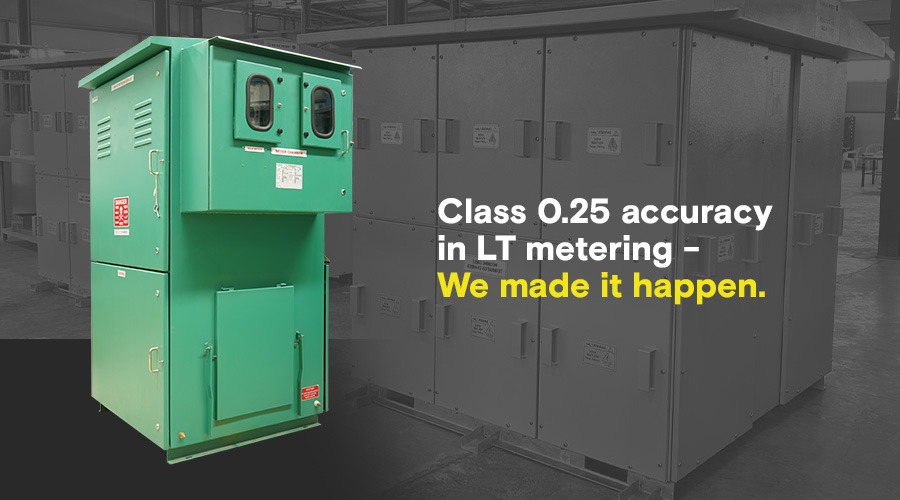It’s not about tightening a few tolerances or swapping a component.
It means building a system that performs exactly the way it’s supposed to no matter the noise, the load shifts, or the installation site.
So when Paras Power delivered a fully functional LT metering cubicle with 0.25 class accuracy in just 3 months it wasn’t a lucky break.
Here’s what made it possible.
1. A Manufacturing Setup That’s Built for Customisation
This wasn’t a pick-from-the-shelf job.
Every component from CTs and PTs to internal wiring and housing was selected, tested and assembled for a purpose. Paras’s in-house manufacturing facility is set up to pivot quickly.
No waiting for vendors. No dependency loops.
Just a streamlined line that can build what the challenge demands.
2. R&D That Doesn’t Sit in the Background
The design wasn’t just about passing specs.
It was about surviving field conditions and delivering long-term revenue assurance.
That’s where R&D stepped in not with theory, but with data-backed design decisions, simulation and prototyping that translated directly into performance on the ground.
3. Real-Time Collaboration Between Design, Tech and Manufacturing
No silos.
Everyone from the drawing board to the shop floor worked with the same goal: delivering a cubicle that hits Class 0.25 and works in LT metering environments.
Changes were implemented on the fly. Testing cycles were compressed. Quality never slipped.
This wasn’t a one-off. It’s how Paras Power works.
When the problem is specific, the solution can’t be generic.
And when it comes to power distribution, accuracy isn’t negotiable.
It has to be built in by people who know exactly how.

